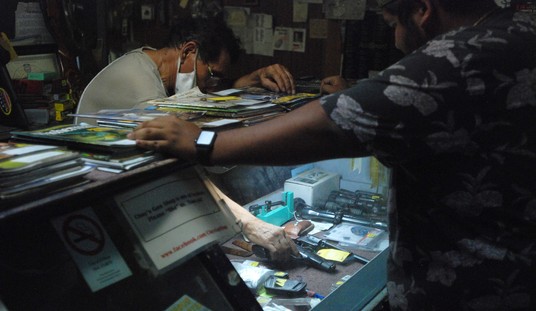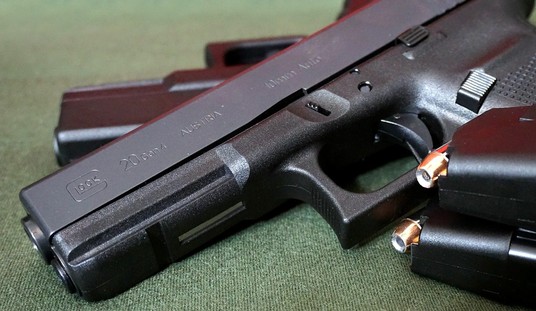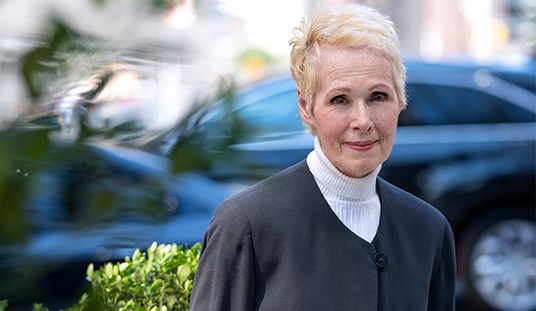
Andrew Thomas, the drunk driver who had pushed himself up out of the passenger-side window of a wrecked SUV and perched himself on the roof before being shot by a Paradise, CA police officer, has died of his injuries:
Andrew Thomas, the man shot by a Paradise police officer after a chase that ended in a rollover crash, is dead.
The nursing supervisor at Enloe Medical Center confirmed Thomas died at approximately 5:30 p.m. Saturday, with family at his side.
Early Thanksgiving morning, Officer Patrick Feaster of the Paradise Police Department pursued Thomas after he suspected him of getting behind the wheel drunk.
The chase ended on Pearson Road, when Thomas hit the median and rolled his Toyota 4Runner ejecting and killing his ex-wife, Darien Ehorn, 23. As Thomas pulled himself from the wrecked SUV, Feaster shot him once in the neck, which left Thomas paralyzed from the neck down.
Butte County District Attorney Mike Ramsey ruled that the shooting was accidental, and said his office would not prosecute Feaster.
Officers Patrick Feaster’s shooting of Andrew Thomas was not “accidental.”
An accidental discharge of a firearm occurs when the gun fails mechanically, as we see in a video on the importance of firearms safety rules from firearms expert and trainer Andrew Tuohy.
That single most important gun safety rule is, of course, never point your gun at anything you aren’t will to destroy.
If you follow this one rule of gun safety, you can have an accidental (mechanical failure) discharge and no one will be hurt because muzzle was pointed in a safe direction. This same rule of gun safety also protects us from negligent discharges, which are those instances when the actions of a human being cause the gun to fire, typically from pulling the trigger when the shooter didn’t intend to fire a shot.
This brings us back to Paradise police officer Patrick Feaster and his shooting of Andrew Thomas.
Thomas wrecked his vehicle, which came to rest on the driver’s side. The only way out of the vehicle for Thomas after the wreck was the open passenger side window, which was now “up.” He put his hands on either side of the window frame, lifted himself up, and just as he started to sit on the edge of the window frame/roof, he was shot in the spine by Officer Feaster.
Feaster arrived on the scene as the wreck was still happening. He stepped out of his vehicle, and as he saw Thomas raising himself up out of the wrecked vehicle, Feaster drew his weapon, pressed out, and fired a shot as his front sight came on target.
To this day, Feaster swears that he did not mean to fire his gun.
That’s frankly irrelevant.
I did not see a legitimate reason for Feaster to draw his weapon in the first place, with a seriously wounded but still alive woman at his feet, and a clearly-unarmed man was attempting to egress a wrecked vehicle. At most, Feaster might have been justified in drawing to a low-ready, so that he could observe whether or not Thomas was about to become a threat… and that’s giving him wide latitude.
Instead, Feaster drew his weapon, pointed it directly at another human being who was not remotely acting like a threat, and pulled the trigger.
He then holstered his weapon and continued towards the vehicle and looked inside it, which you simply would not do if you thought you were facing a threat.
Feaster then spent a total of eleven minutes refusing to deal with the reality that he shot Thomas, even though Thomas told him the moment Feaster approached the vehicle that he’d shot him.
Amazingly, Butte County District Attorney Mike Ramsey refused to charge Feaster with any of roughly a half-dozen possible charges after Thomas was paralyzed by Feaster’s negligent discharge in what I personally view as a deplorable lack of prosecutorial judgement. Other officers and citizens around the nation are typically charged in instances where they shoot someone “by accident,” and Feaster should have been charged weeks ago.
Now that Thomas has died as a result of his wounds, Mike Ramsey must charge Feaster with criminally negligent homicide, at a minimum. If it can be determined that the eleven minutes that Feaster hid the fact that he shot Thomas contributed to his death, then he should face murder charges.
I don’t think that Patrick Feaster is a “bad person.” He did, however, make a deadly mistake that he then compounded tremendously with every passing moment and decision to hide his accident, and those mistakes ultimately led to a man’s death.
Patrick Feaster must be terminated from the Paradise Police Department, and must be criminally charged for Andrew Thomas’s death, just as Thomas would have faced criminal charges for the death of his ejected passenger if he had survived.
Justice requires accountability, or the law means nothing.








Join the conversation as a VIP Member